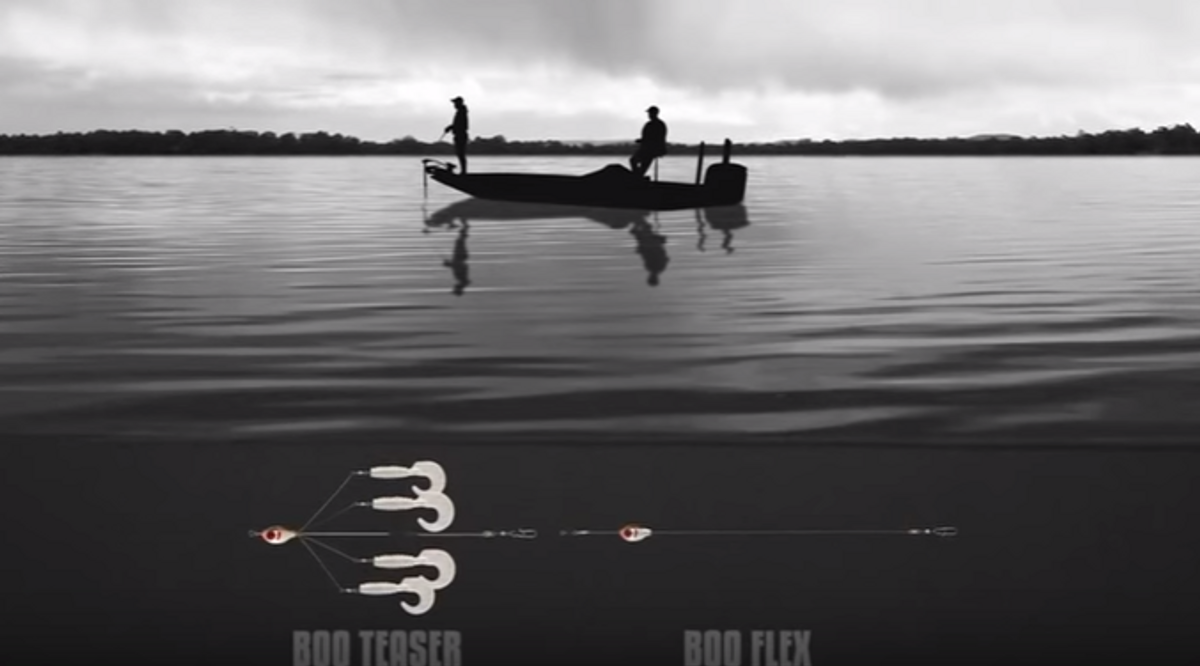Alabama Rig Fishing 101 – How To Rig And Fish The Multi-Wire Phenomenon
Over the years, there have been a number of techniques or lures that take the bassing world by storm. In the late 80’s, it was the Sluggo, in the 90’s it was the Senko, followed in the new millennium by the Chatterbait and the drop shot. During each such rage, initial dominant tournament catches spurred a rapid explosion in sales, followed by each residing to a more regular existence in the vast majority of angler’s boxes.
Most recently, the bass universe has been completely upended by the Alabama rig – which burst onto the scene in late 2011, when Paul Elias nearly lapped the field on Alabama’s Lake Guntersville in an FLW Tour derby, winning by a staggering 17 pound margin.
Ever since that late fall smack down, the Alabama rig has been embroiled in a storm of monster fish catches, and high controversy from anglers saying it’s actually too effective.
There have been a lot of baits advertised as “too effective for tournaments,” but to our knowledge, the Alabama rig is the first that can actually claim that prize – as it has actually been banned by both top tours.
Controversy aside, and despite it not being allowed in major tournaments, the Alabama rig is without question one of the most effective baits you can throw – provided the conditions are right.
For that reason, we thought it pertinent to put together an article on Alabama rig basics.
How To Set-Up The Alabama Rig
Shop Alabama Rigs
The market has been flooded with Alabama rigs in the last couple years, and despite different variations like the Booyah Baits Boo Rig, they all feature a central line tie with a series of wires extending in all directions, to which snap swivels are attached. They come in a multitude of sizes, from 2 to 12 wires of differing lengths. The trick is to attach a swimbait to the end of each wire, thus creating the “school of baitfish” effect when reeled through the water column. Depending on different state laws and regulations, anglers will use as many hooked swimbaits as they can, and thread hook less “dummy” baits on the remaining arms.
To prevent the rig from spinning, use heavier jig heads on the bottom wires, and lighter (or weightless) jig heads on the top. A good starting place for a 5 wire rig is to use ¼ ounce jig heads on the two bottom and center wires, and 1/8 or 3/16 ounce jig heads on the top two wires. At the business end, thread on your favorite paddle tail swimbait, while trying to match the size of the prevailing baitfish population.
If you add up the weight of 5 swimbaits, 5 jig heads, and the rig – you’ve got a minimum of 3 ounces for most Alabama rigs, so it takes stout tackle to effectively fish. Most top anglers rely on a 7 foot 6 inch or longer flipping stick, paired to a high-speed reel spooled with either 65 pound braid or 20 pound fluorocarbon (whichever is your preference).
When To Fish The Alabama Rig
The Alabama rig does its most damage once water temperatures drop in the late summer, and stays hot through the pre-spawn. Fish will definitely bite it all year long, but the best times to throw it are when the bass are suspended, grouped up, and feeding on shad.
Where To Fish The Alabama Rig
Ideal places to throw the Alabama rig are ambush points along deep structure. On reservoirs, this includes ledges, humps, bridges, bluff walls, and over brush piles. On natural lakes, ideal Alabama rig spots are points, deep grass lines, deep breaks, and offshore rock piles.
How To Fish The Alabama Rig
One of the best things about the Alabama rig is that it doesn’t require a ton of experience to effectively fish it. The key is to keep the bait up in the water column, around or slightly above the level of the fish. Simply cast it out, count it down to the depth you suspect the fish are at, and slowly wind it back. The strikes are incredible, and bass will often come from a long distance to bite when they are feeding aggressively.
Updated January 26th, 2021 at 5:02 AM CT


